Discover Long Tien Pagoda - Halong’s Largest Historic Temple
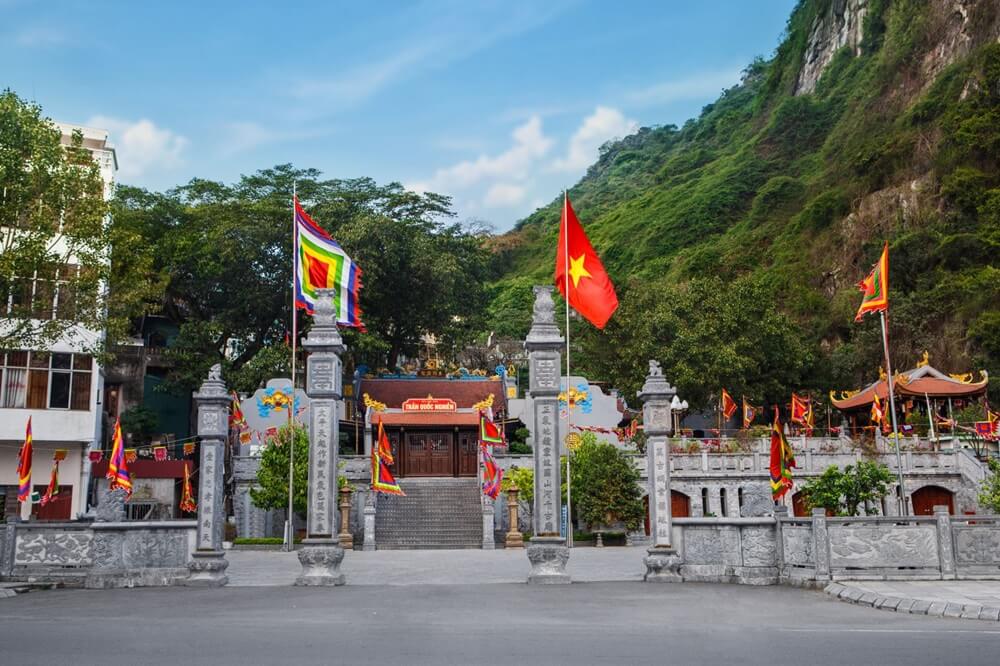
Located at the base of Bai Tho Mountain, Long Tien pagoda is not just the largest pagoda in Halong City – it is also a spiritual and cultural icon. Built in 1941, this historic temple beautifully blends traditional Vietnamese Buddhist architecture with centuries of devotion.
Ideal for visitors planning to combine itinerary with day cruise on Halong Bay and exploring the city, Long Tien Pagoda provides a tranquil retreat and a meaningful glimpse into the local heritage.
This guide covers all you need to know about Long Tien Pagoda, including its history, architectural features, nearby sights, and helpful tips for your visit.
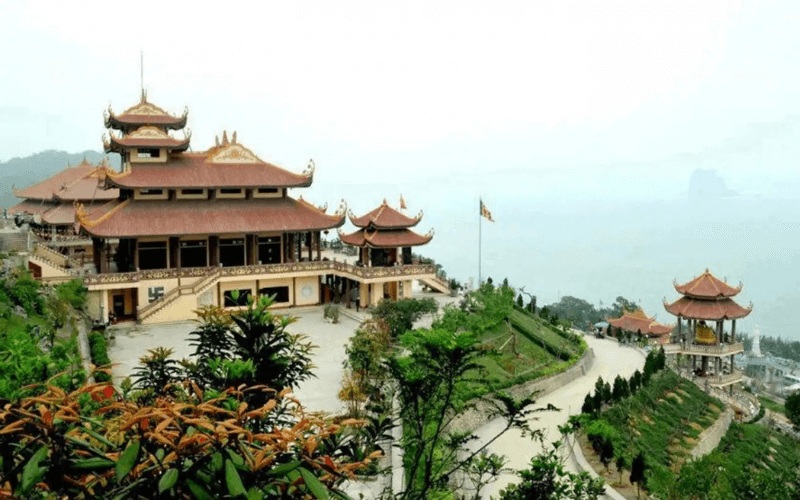
Introduction to Long Tien Pagoda
Nestled in the heart of Halong City, Long Tien pagoda holds a special place in both the spiritual and cultural life of the region. It stands at the foot of the famous Bai Tho (Poem) Mountain, making it not only a sacred destination but also a picturesque one.
The pagoda is often visited by locals for prayer and by tourists seeking an authentic cultural experience. Unlike many pagodas in Vietnam, Long Tien pagoda remains a functioning temple where monks live, ceremonies are held, and Buddhist teachings continue to thrive.
With its large scale and architectural beauty, Long Tien pagoda is a unique attraction for travelers who want to understand the spiritual essence of Halong beyond its stunning bay and limestone karsts. It is a quiet space to reflect, admire traditional Vietnamese religious art, and experience daily life in Halong City.
Address: Long Tien Pagoda, Le Quy Don, Bach Dang, Ha long, Quang Nin
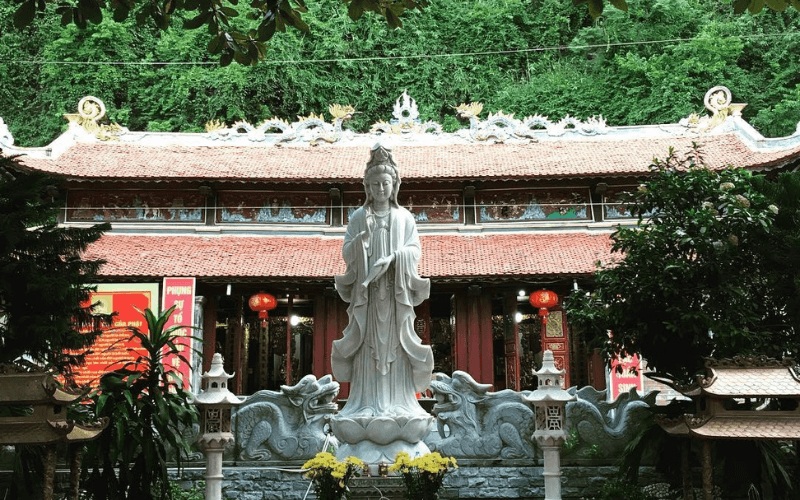
Historical Background of Long Tien Pagoda
Foundation and Cultural Context
Long Tien pagoda was constructed in 1941 during the French colonial period, a time when Vietnam faced major cultural shifts. Despite foreign influence, the Vietnamese people preserved their religious roots. The pagoda was built by a group of Buddhist monks and local craftsmen determined to create a sacred space for the community in Halong.
It was founded as a Mahayana Buddhist temple and dedicated to Buddha and national heroes, including General Tran Hung Dao, a historical figure revered for defeating Mongol invasions in the 13th century. This blend of Buddhist and patriotic symbolism reflects the pagoda’s deeper role in Vietnamese identity.
Significance to Halong’s Community
Long Tien pagoda has long served as a center of spiritual activity in Halong. During holidays like Tet and Vu Lan, the pagoda becomes a vibrant site of offerings and blessings. Local residents often visit to pray for good fortune, health, and peace for their families. Over the decades, the pagoda has stood as a symbol of resilience and unity for the people of Quang Ninh Province.

Architectural Features of Long Tien Pagoda
Traditional Vietnamese Design Elements
The architecture of Long Tien pagoda follows traditional Vietnamese Buddhist design. Its Tam Quan gate (three-entrance gate) welcomes visitors with ornate carvings of dragons, lotuses, and phoenixes – symbols of power, purity, and peace in Eastern philosophy. The main hall features a high, sweeping tiled roof with curved corners that resemble the wings of a phoenix.
Inside the pagoda, altars are beautifully decorated with incense burners, candles, and offerings. Large bronze bells and drums are used during ceremonies to invite blessings and drive away evil spirits.
Statues and Sacred Symbols
At the heart of Long Tien pagoda are its sacred statues. These include statues of Amitabha Buddha, Quan Am (Goddess of Mercy), and Shakyamuni Buddha. Each statue represents a different aspect of Buddhist teaching – compassion, wisdom, and enlightenment. In addition to Buddhist figures, there are statues of historical heroes, bridging the gap between spirituality and national pride.
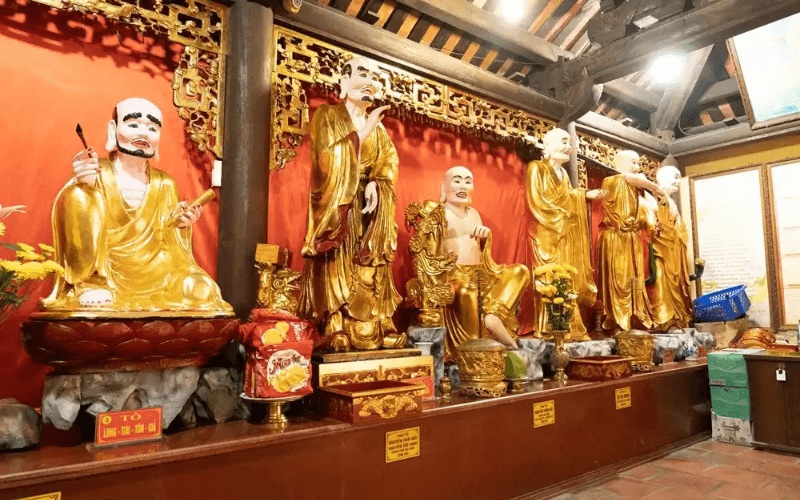
To enhance visual clarity, here is a table summarizing the key features:
| Architectural Element | Description |
| Tam Quan Gate | Three-gate entrance with intricate carvings |
| Main Hall | Houses primary Buddha statues and altars |
| Dragon & Phoenix Motifs | Symbolize strength, harmony, and protection |
| Bronze Bell & Drum | Used during rituals and prayer ceremonies |
| Quan Am Statue | Represents compassion and mercy in Buddhism |
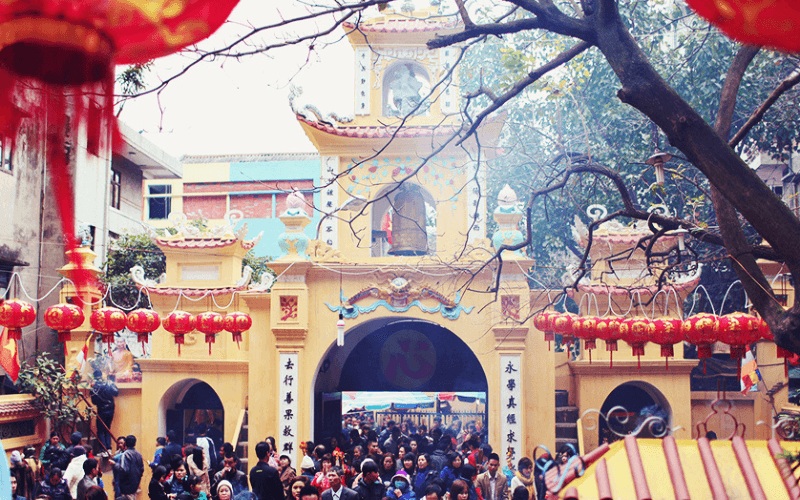
Festivals and Ceremonies at Long Tien Pagoda
Long Tien pagoda is not only a place of worship but also the focal point for several important Buddhist festivals. The largest event is the Long Tien Pagoda Festival, held annually in the first lunar month. Pilgrims and tourists gather here to witness prayer rituals, traditional music, and flower offerings. It is a time of renewal and spiritual cleansing.
During Tet (Vietnamese Lunar New Year), locals visit the pagoda to light incense and pray for a prosperous year. The Vu Lan Festival, which honors deceased ancestors, is also celebrated with lantern releases and solemn ceremonies.
These events offer a unique opportunity for visitors to experience the cultural soul of Halong and understand the traditions rooted in Long Tien pagoda.
Conclusion
Long Tien pagoda is more than just a religious site – it is a living symbol of Halong’s rich cultural tapestry. With its historical depth, spiritual atmosphere, and beautiful location, it offers a unique experience that connects visitors with Vietnam’s heritage.
Whether you’re here for a day or a longer stay, don’t miss the chance to visit Long Tien pagoda, reflect under its ancient roof, and explore the local life that surrounds it.




